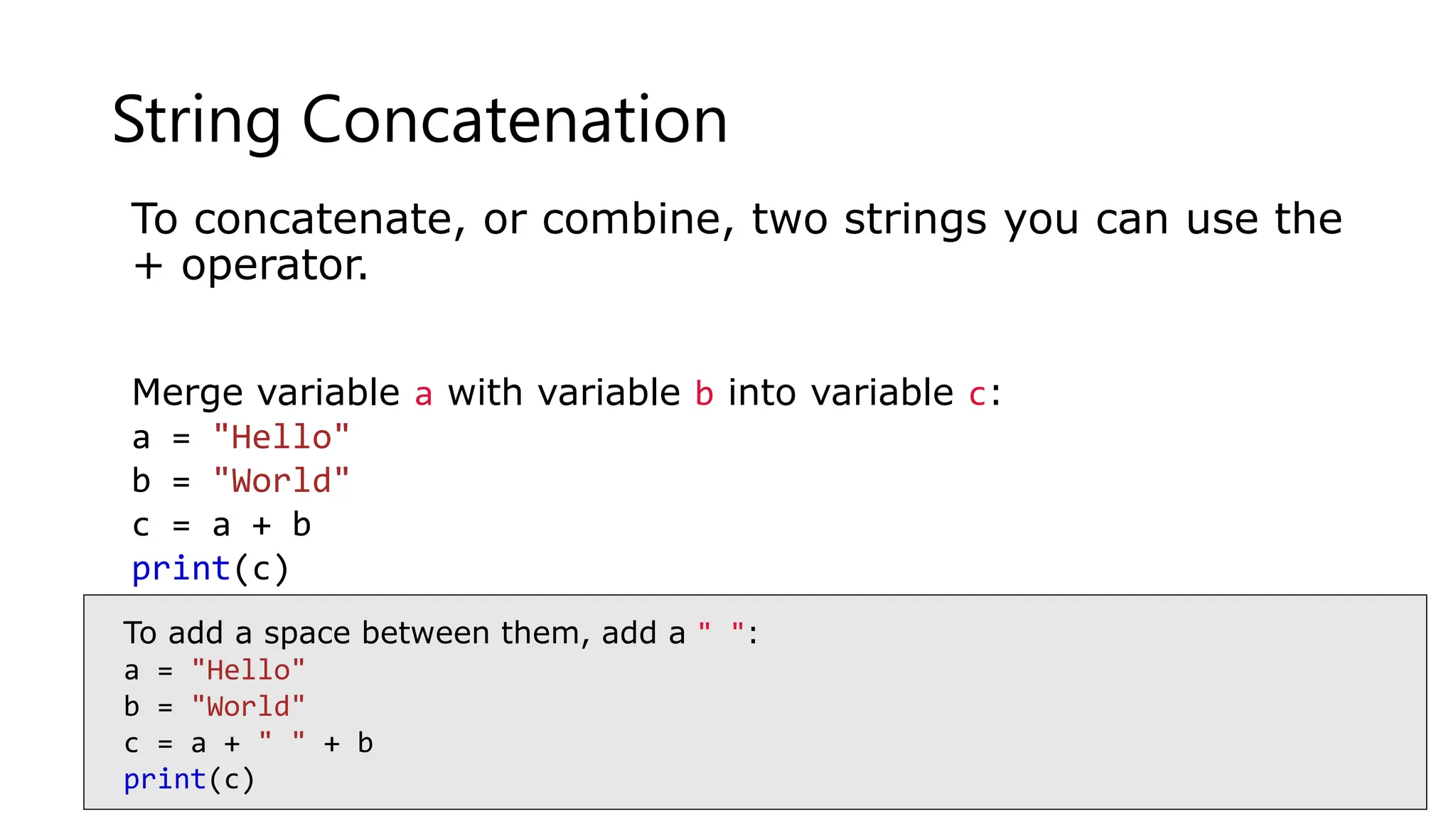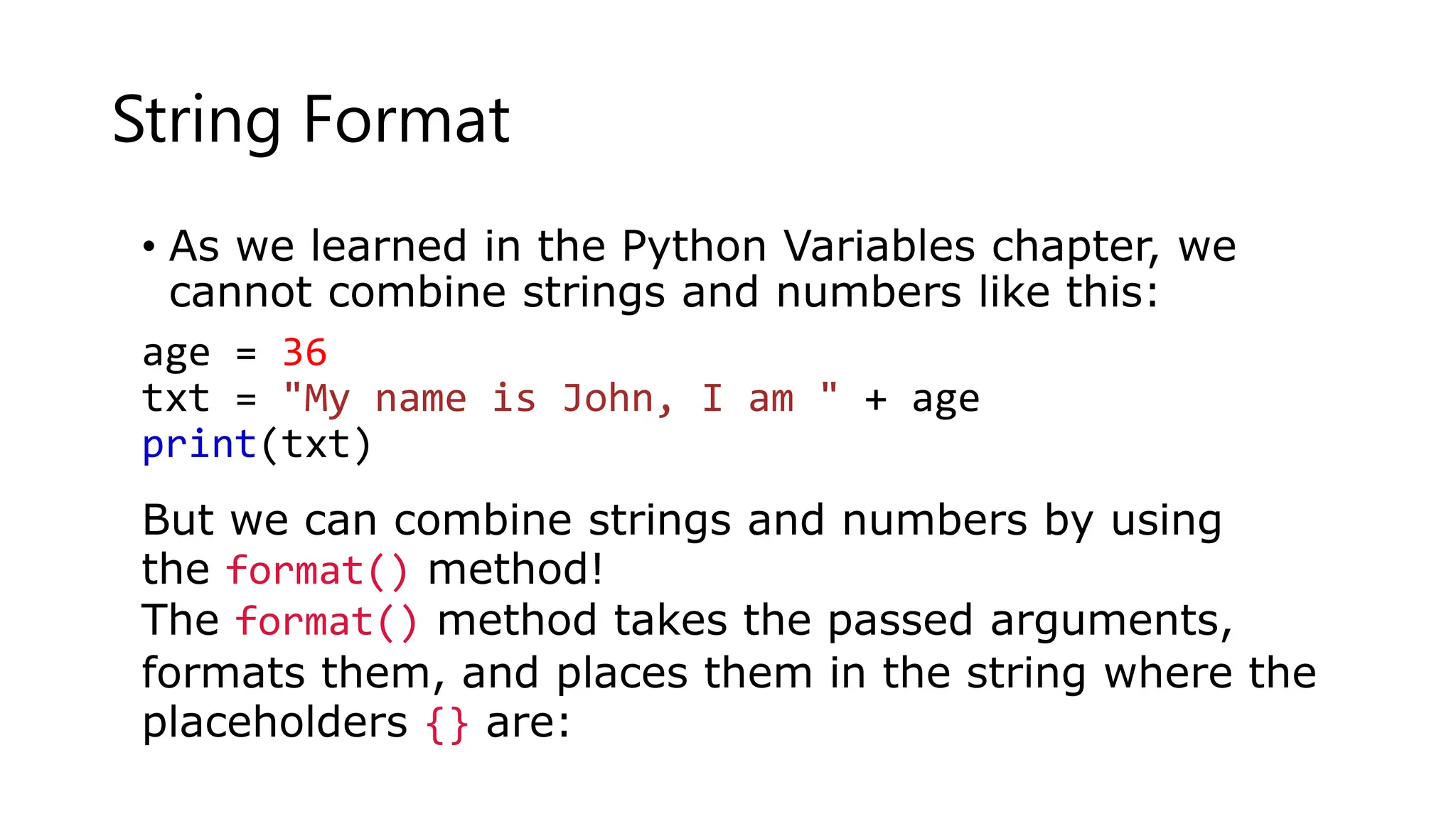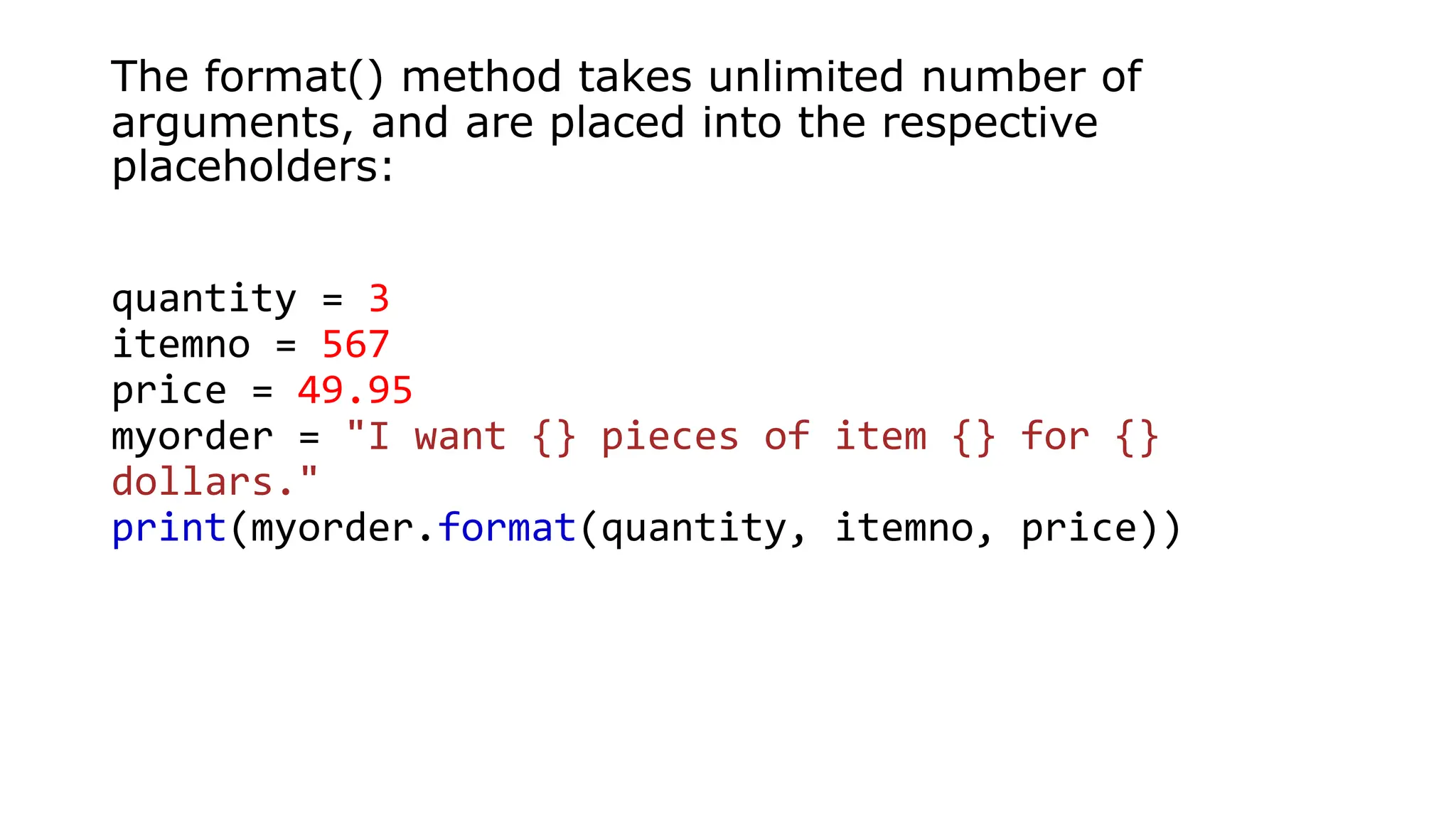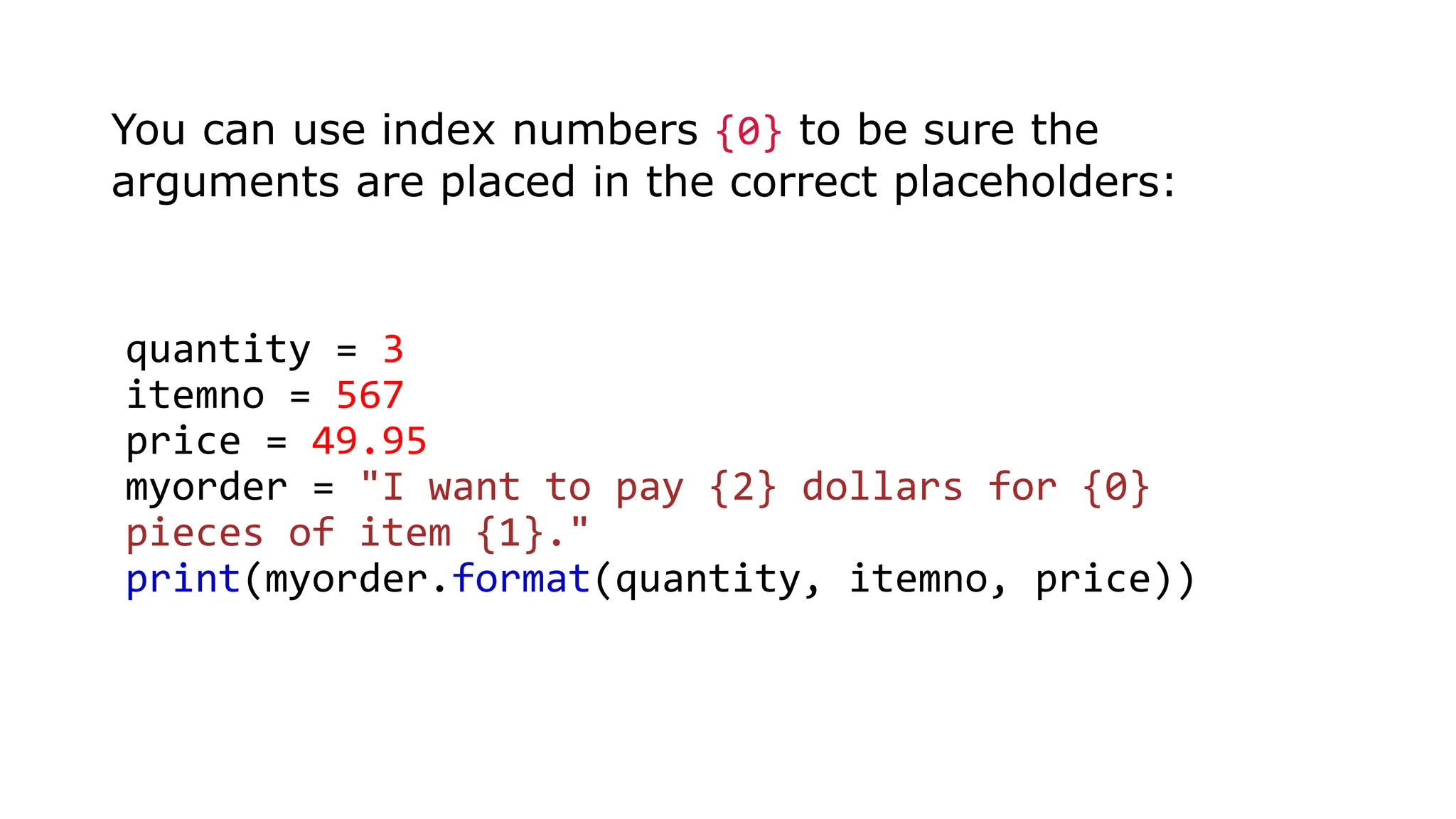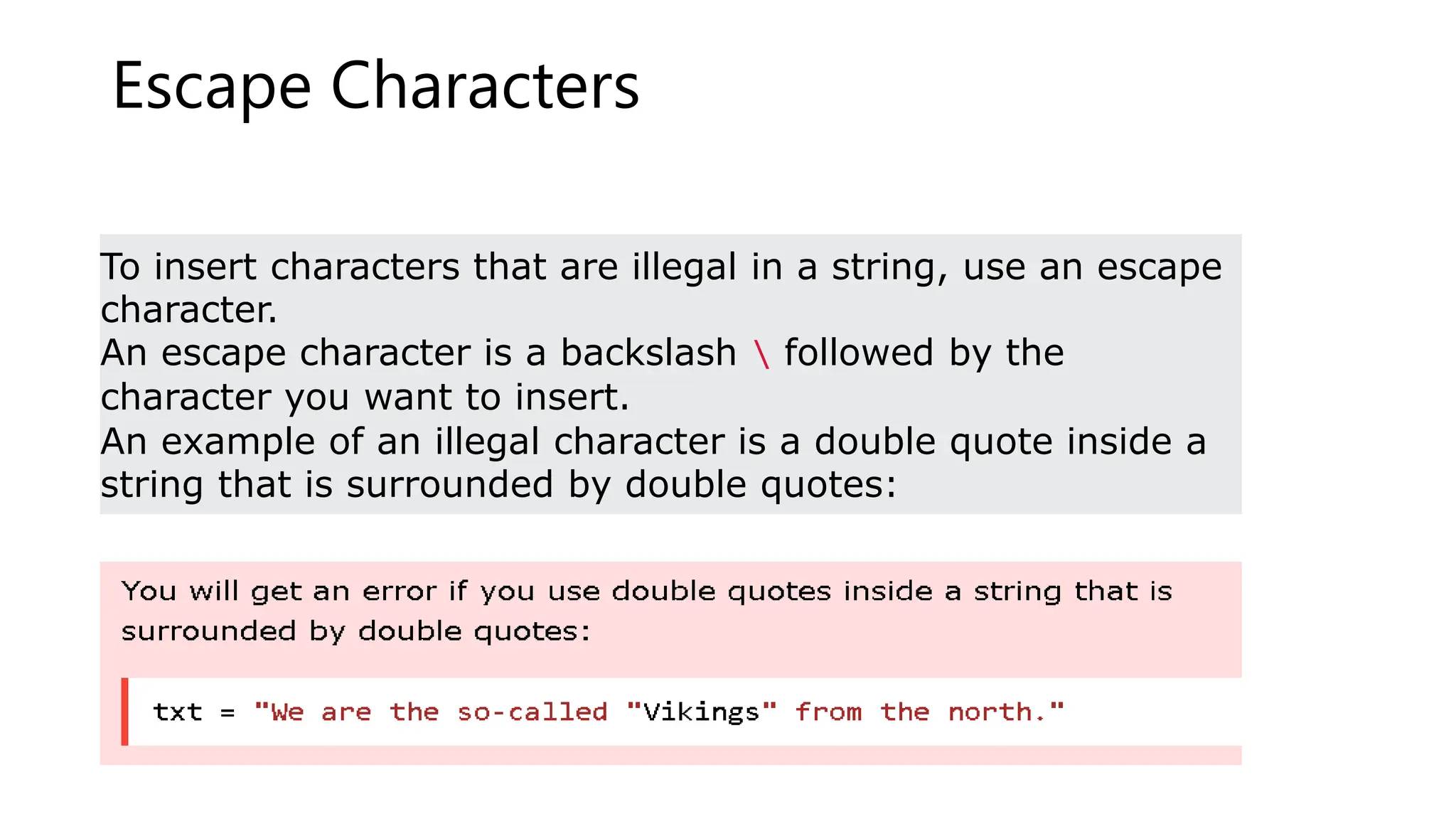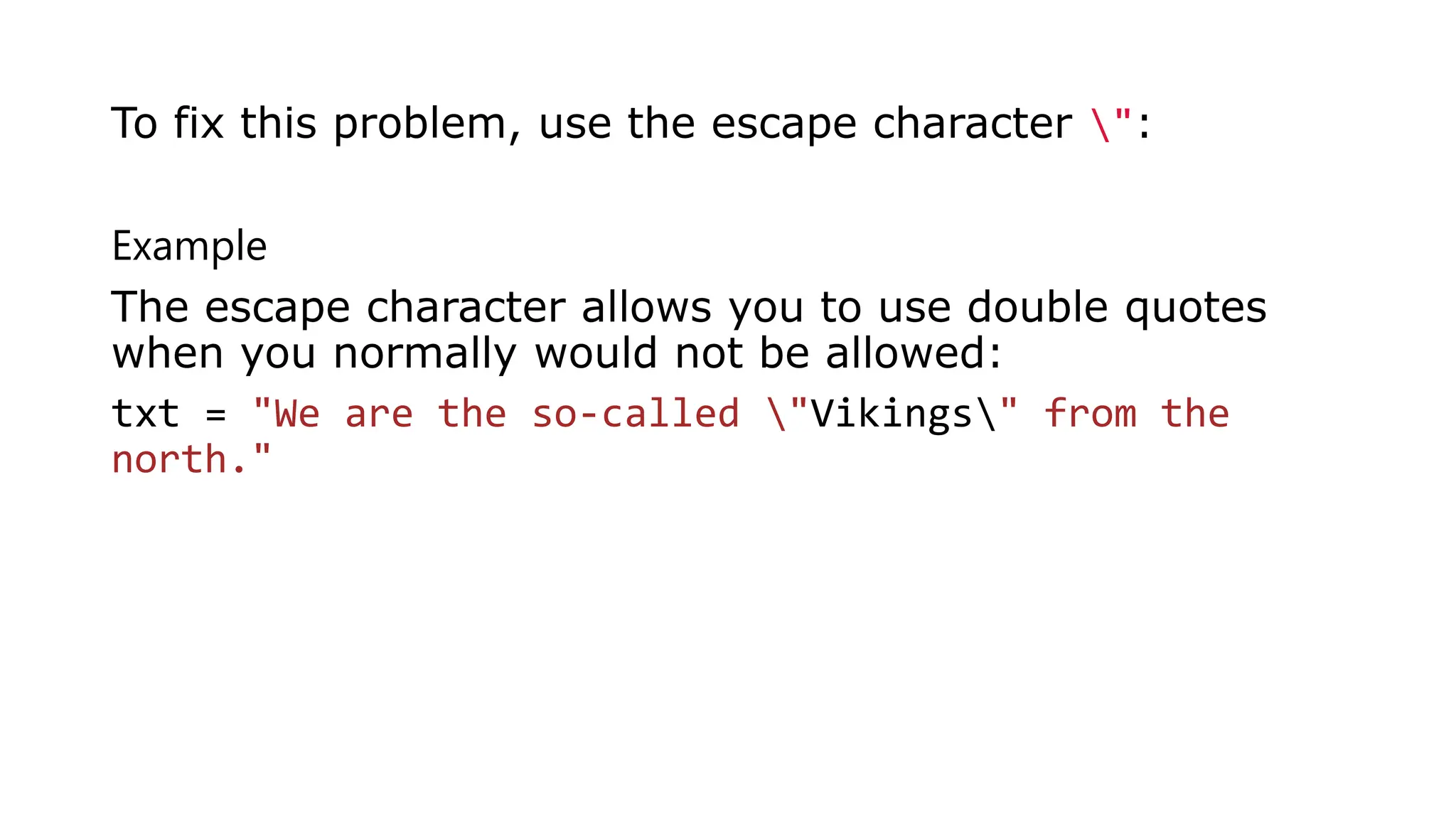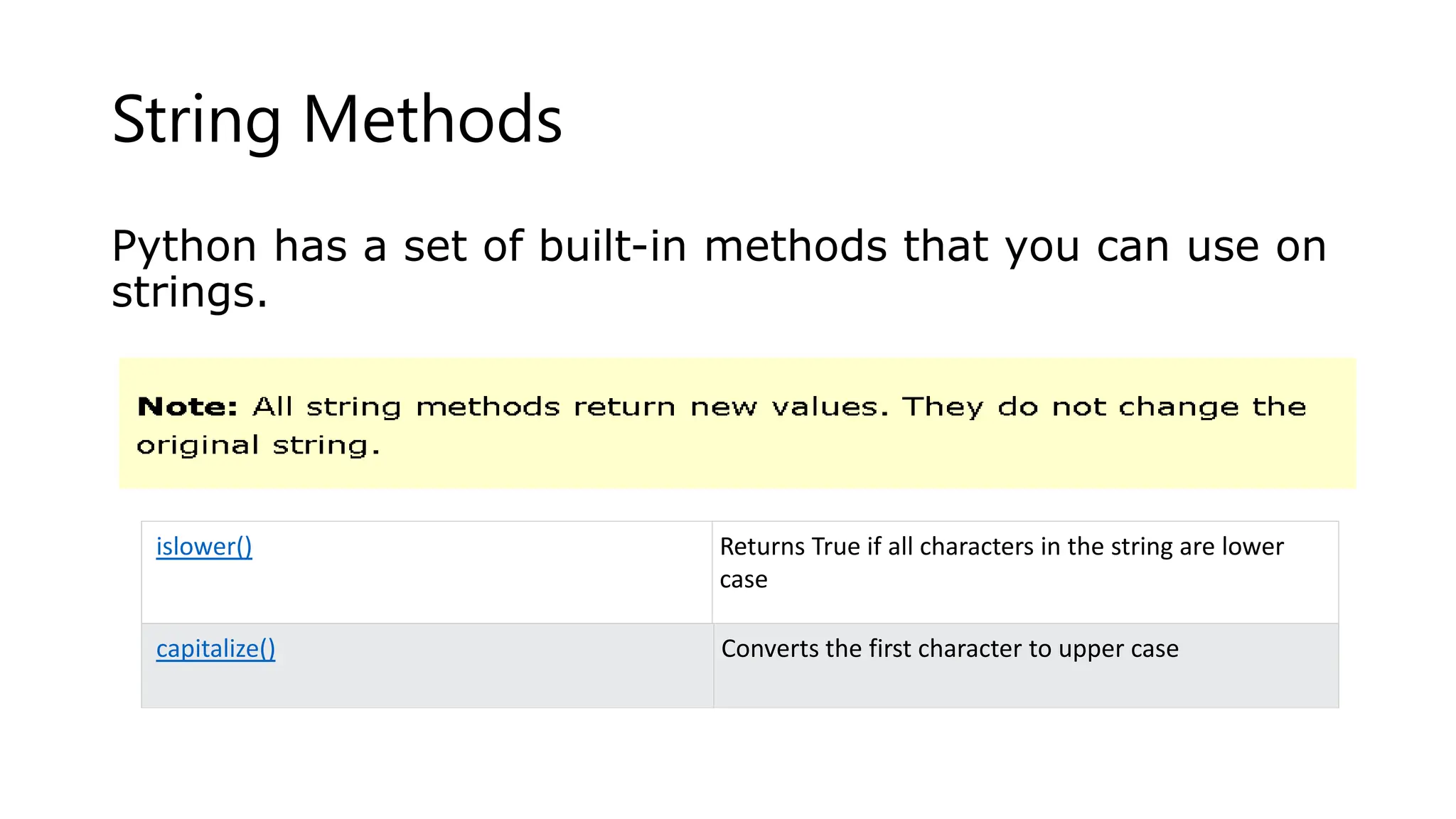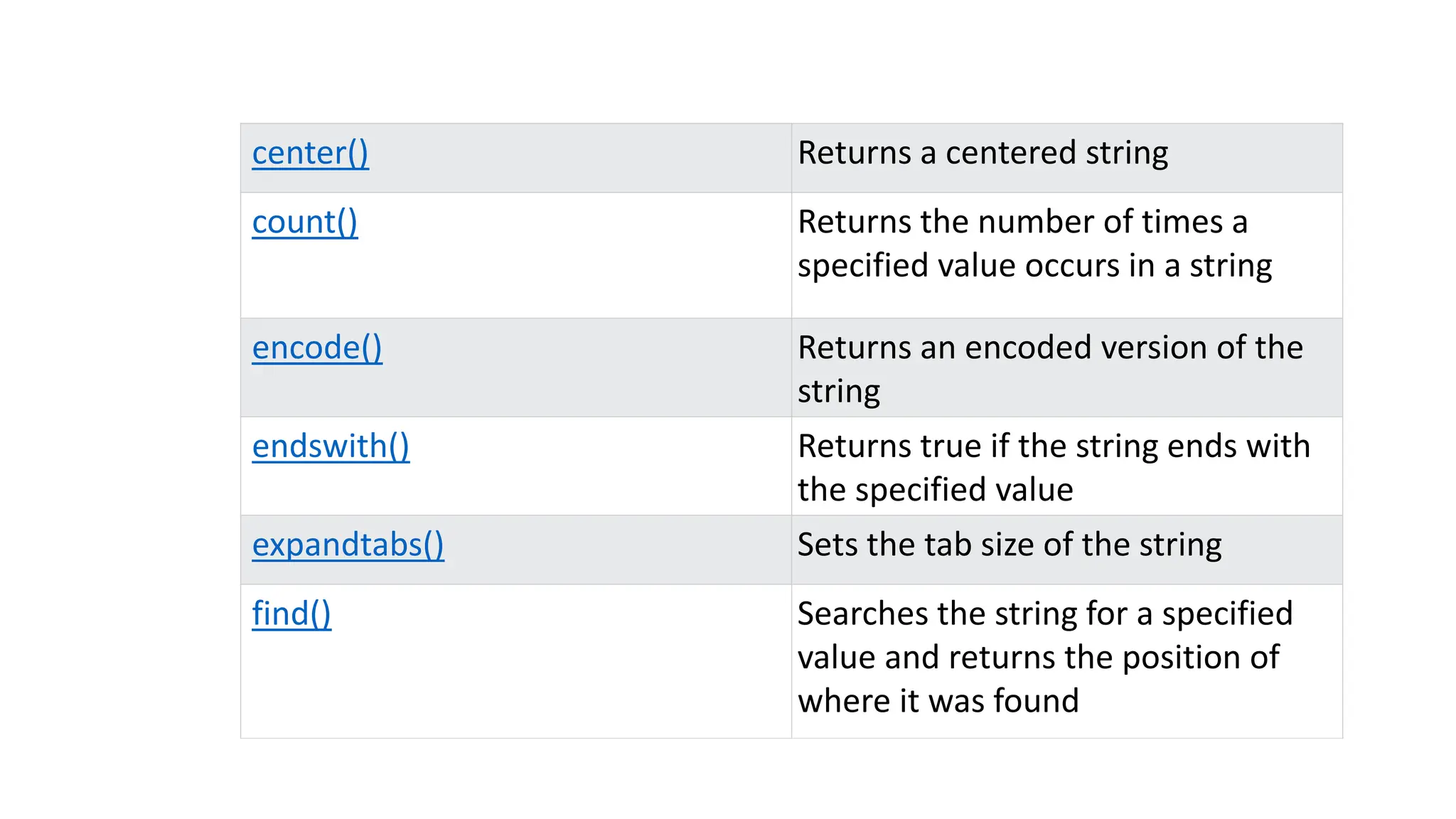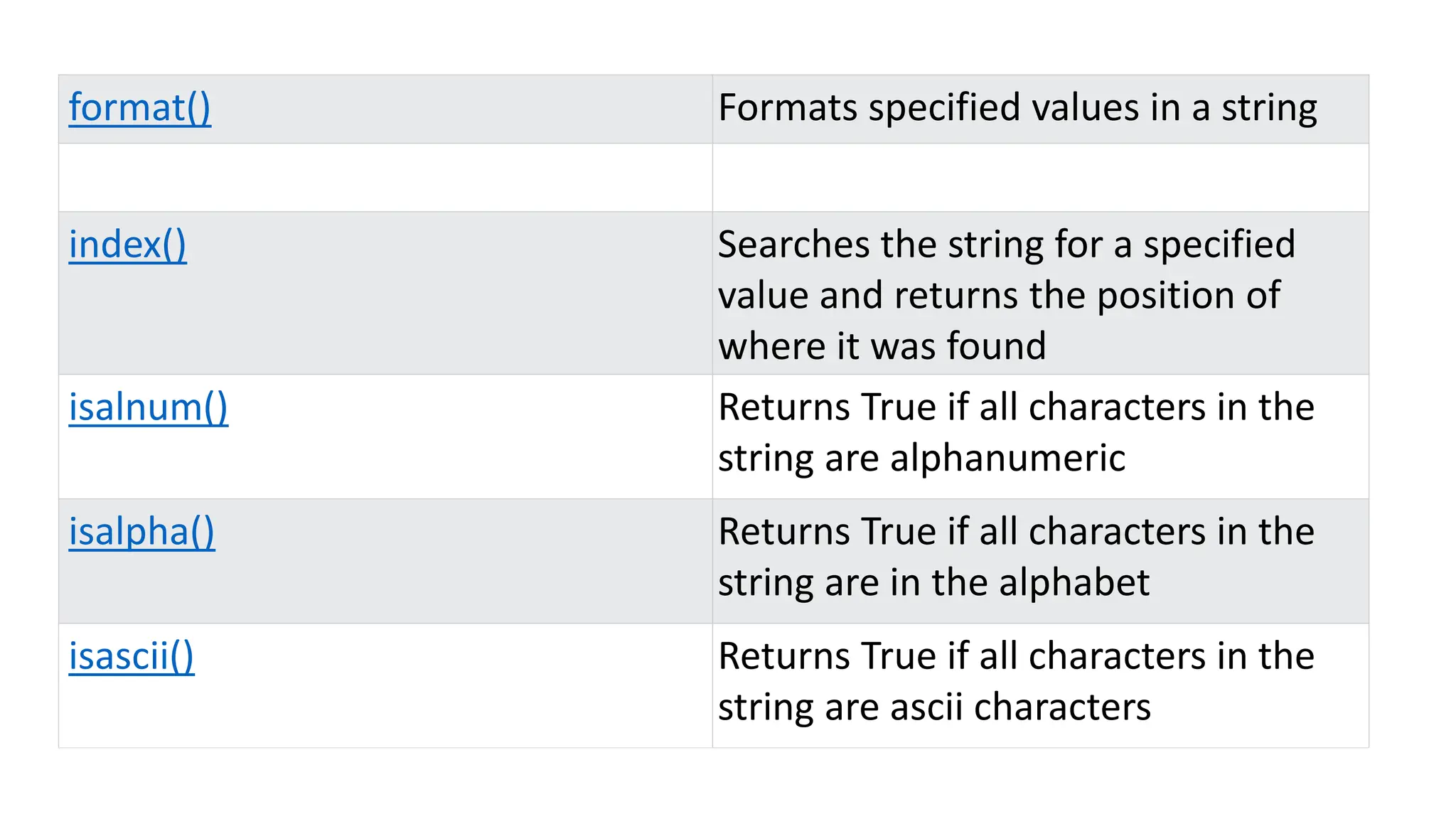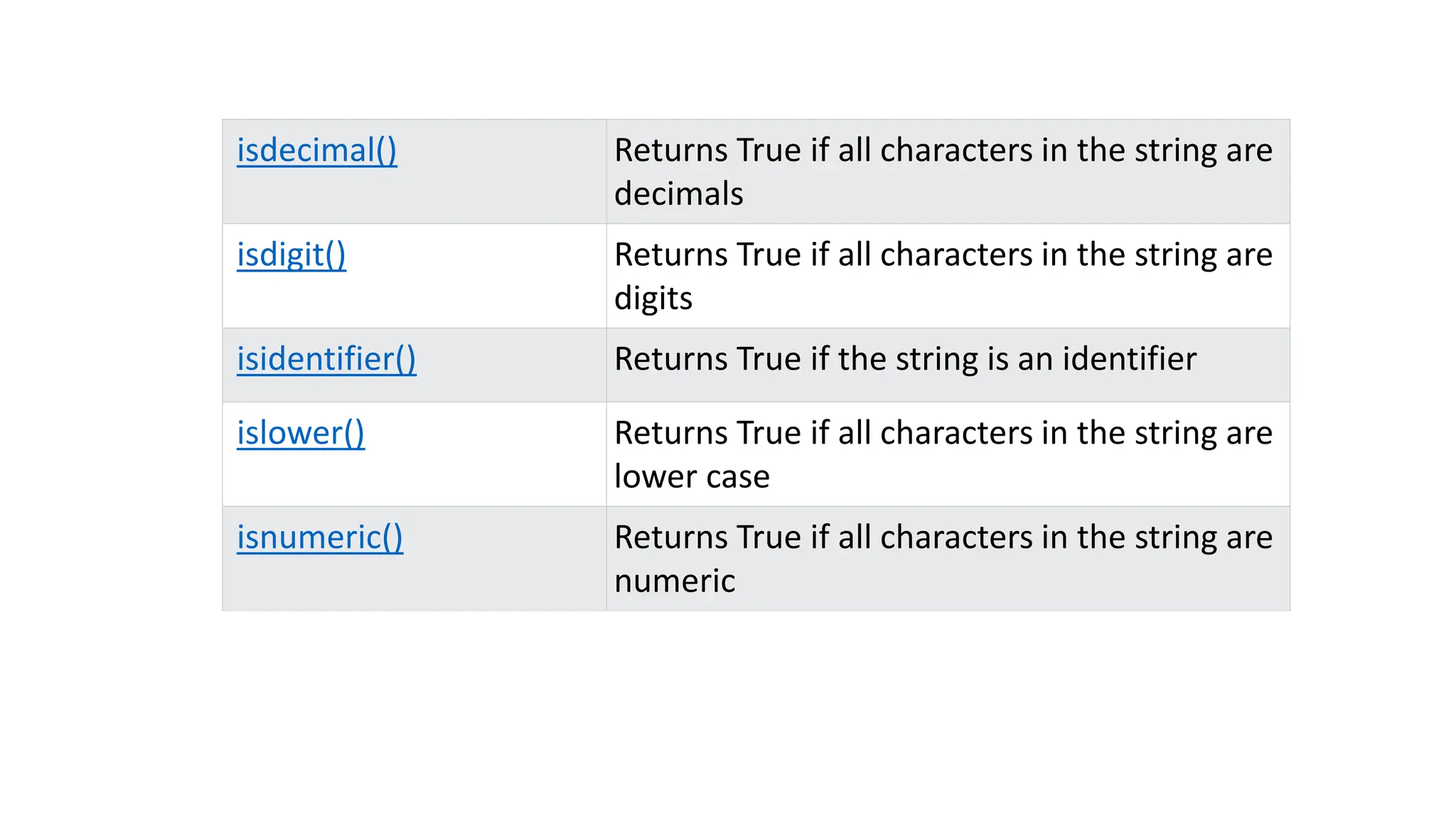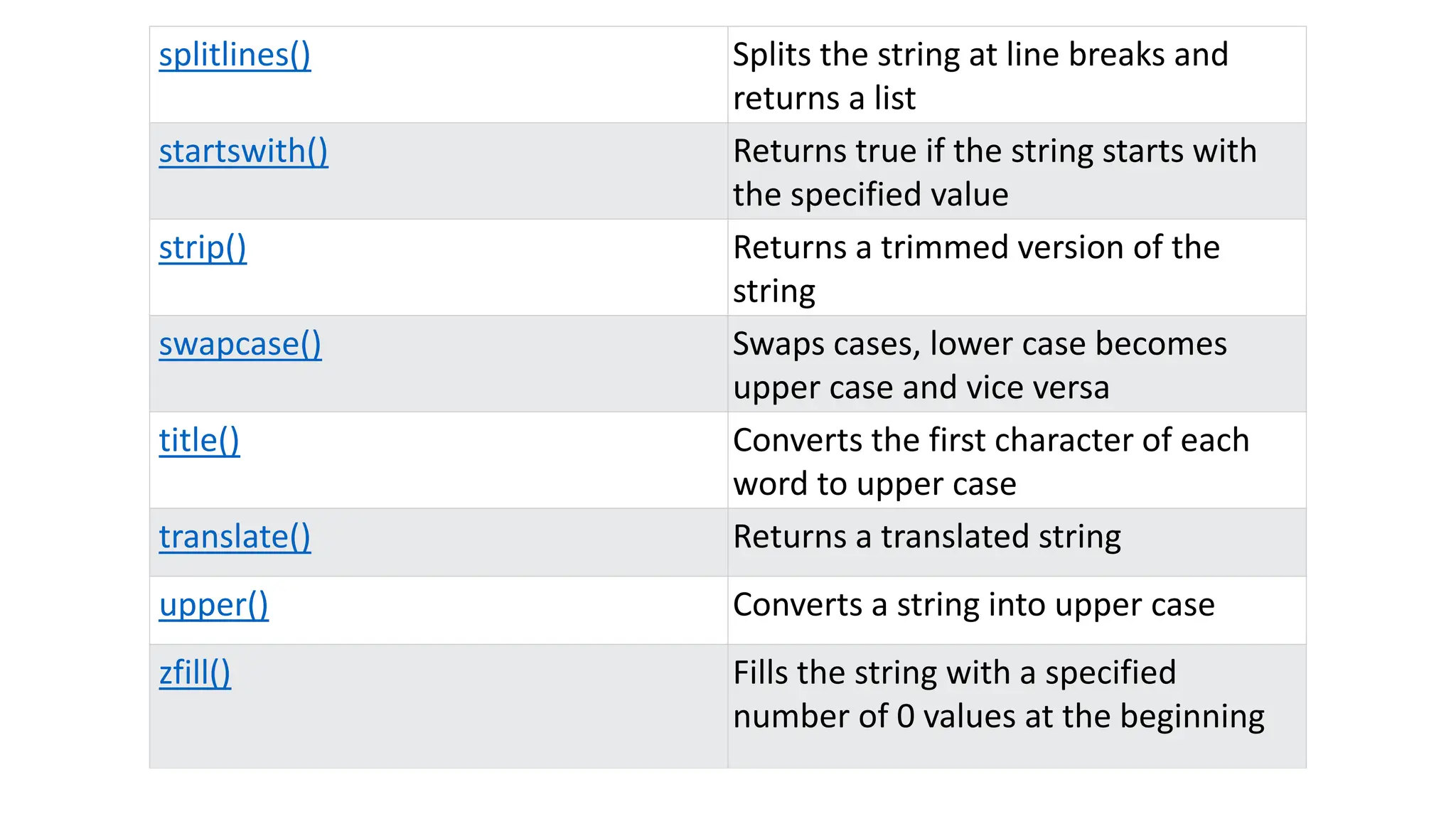Strings in Python can be defined using single quotes, double quotes, or triple quotes for multiline strings. Strings have many built-in methods that allow you to modify, slice, check, count, and format string values. Common string methods include upper(), lower(), strip(), replace(), split(), format(), isX() checker methods, and slice to extract substrings.
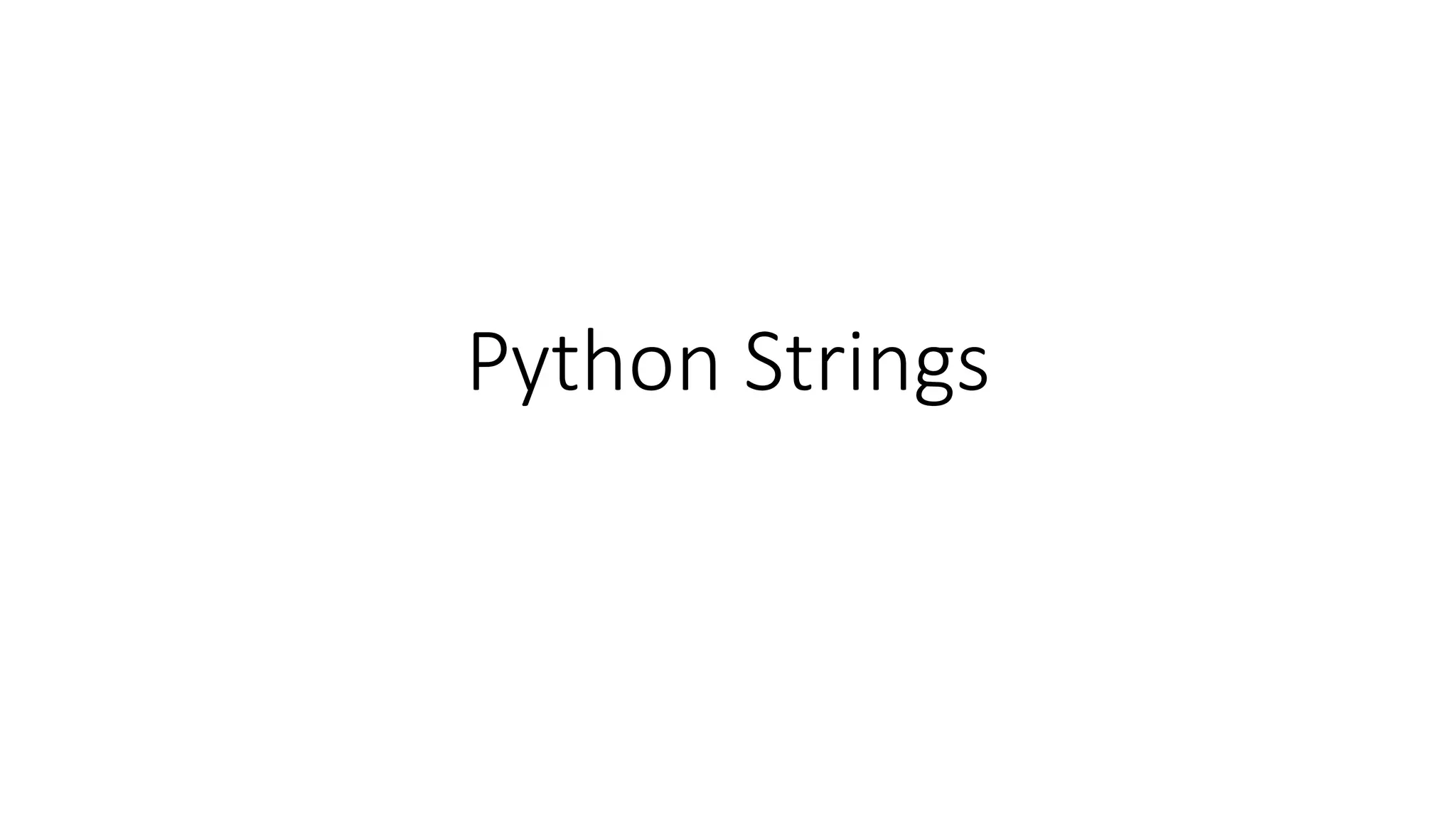
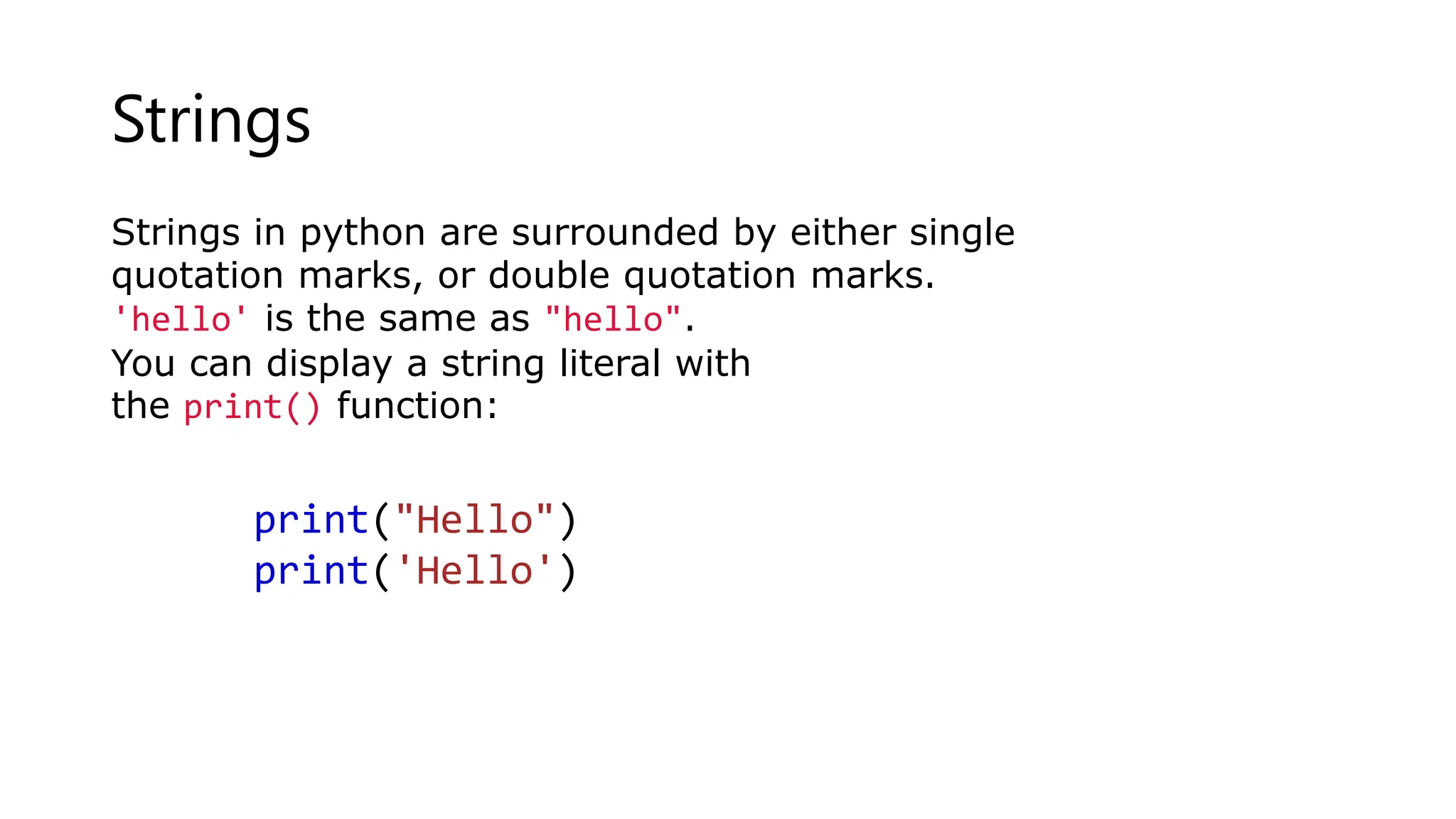
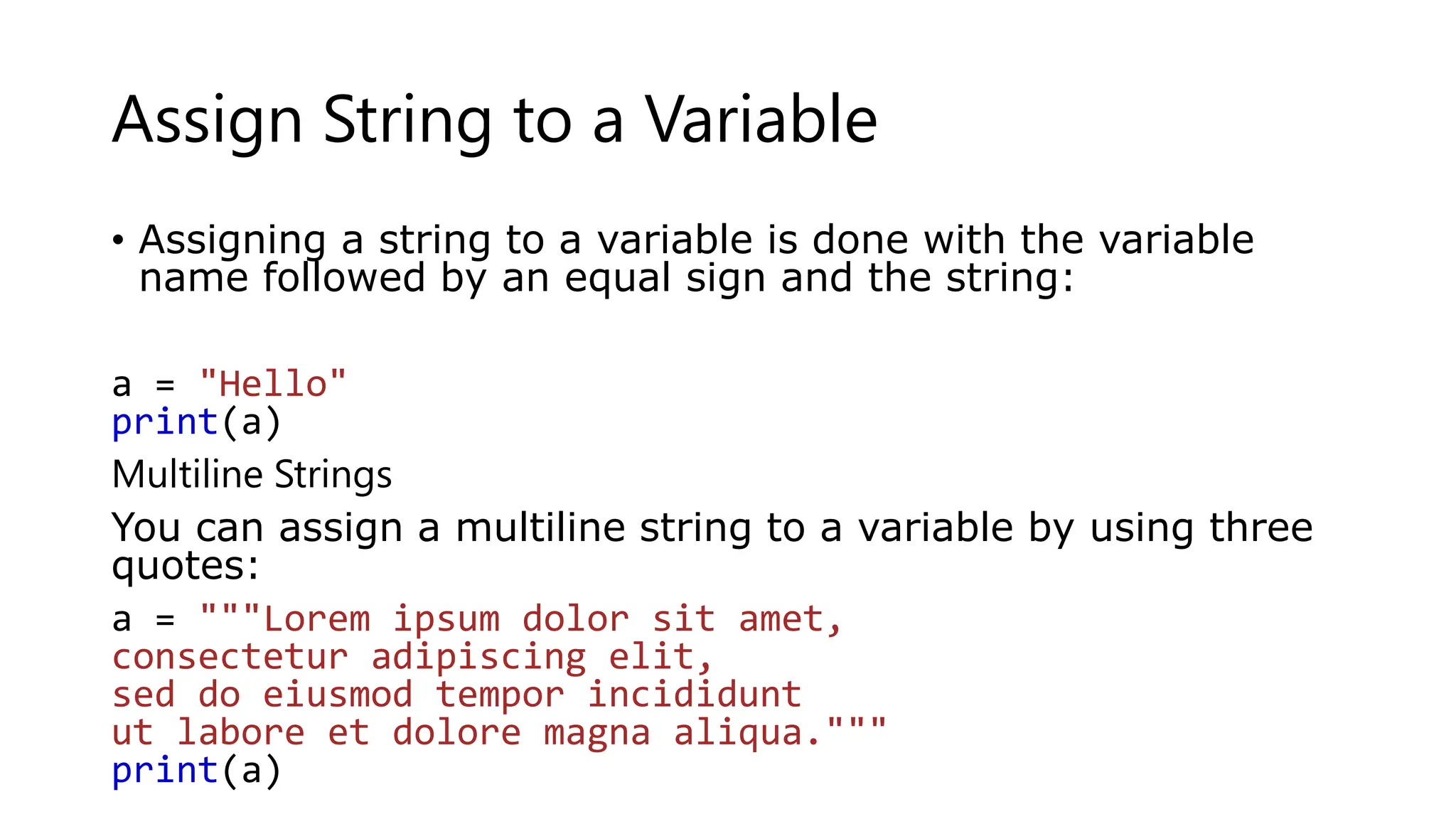
![Strings are Arrays
• Like many other popular programming languages, strings in
Python are arrays of bytes representing unicode characters.
• However, Python does not have a character data type, a
single character is simply a string with a length of 1.
• Square brackets can be used to access elements of the
string.
Get the character at position 1 (remember that the first
character has the position 0):
a = "Hello, World!"
print(a[1])](https://image.slidesharecdn.com/pythonstrings-231016105609-4ddc8b97/75/Python-Strings-pptx-4-2048.jpg)
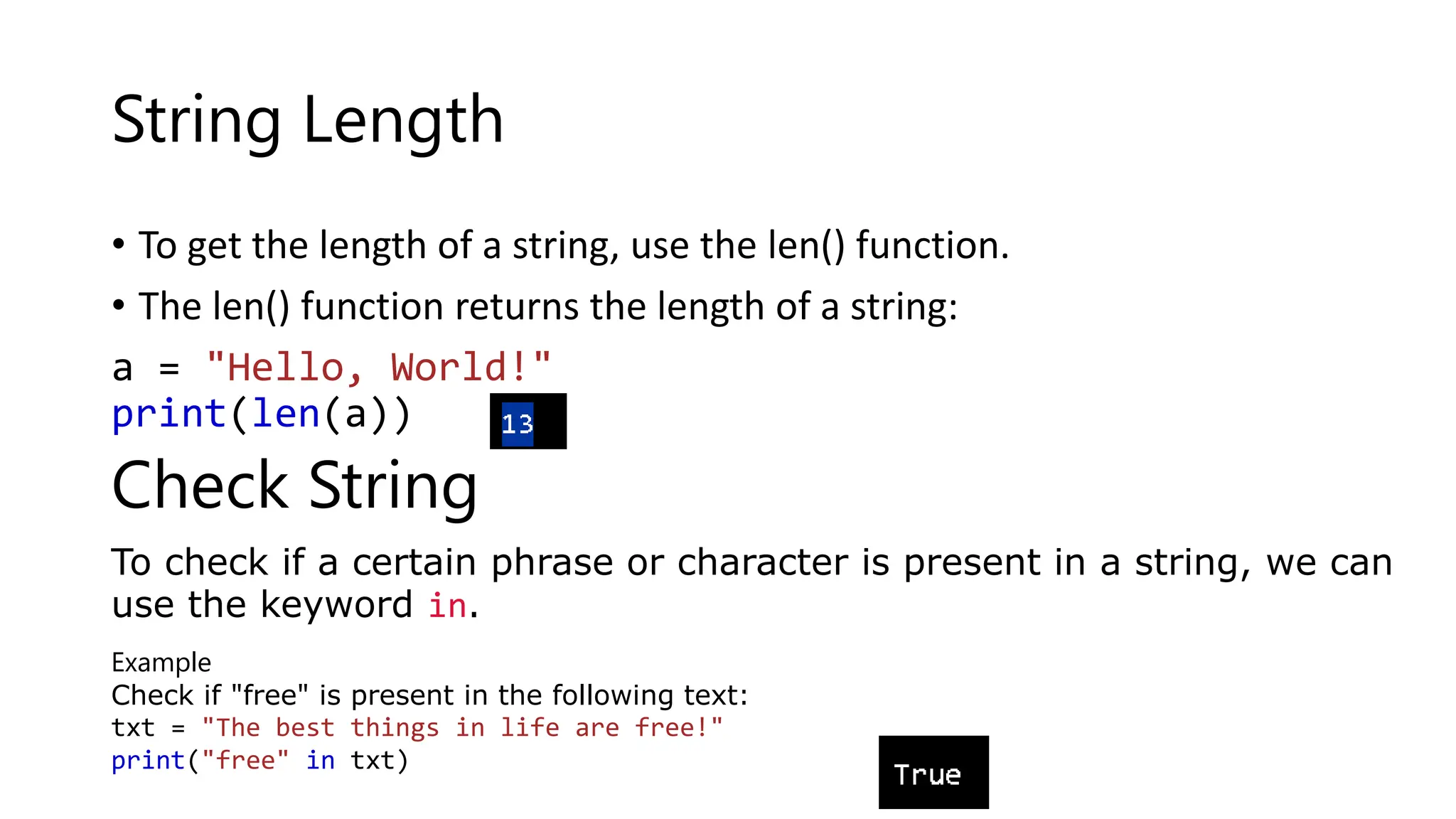
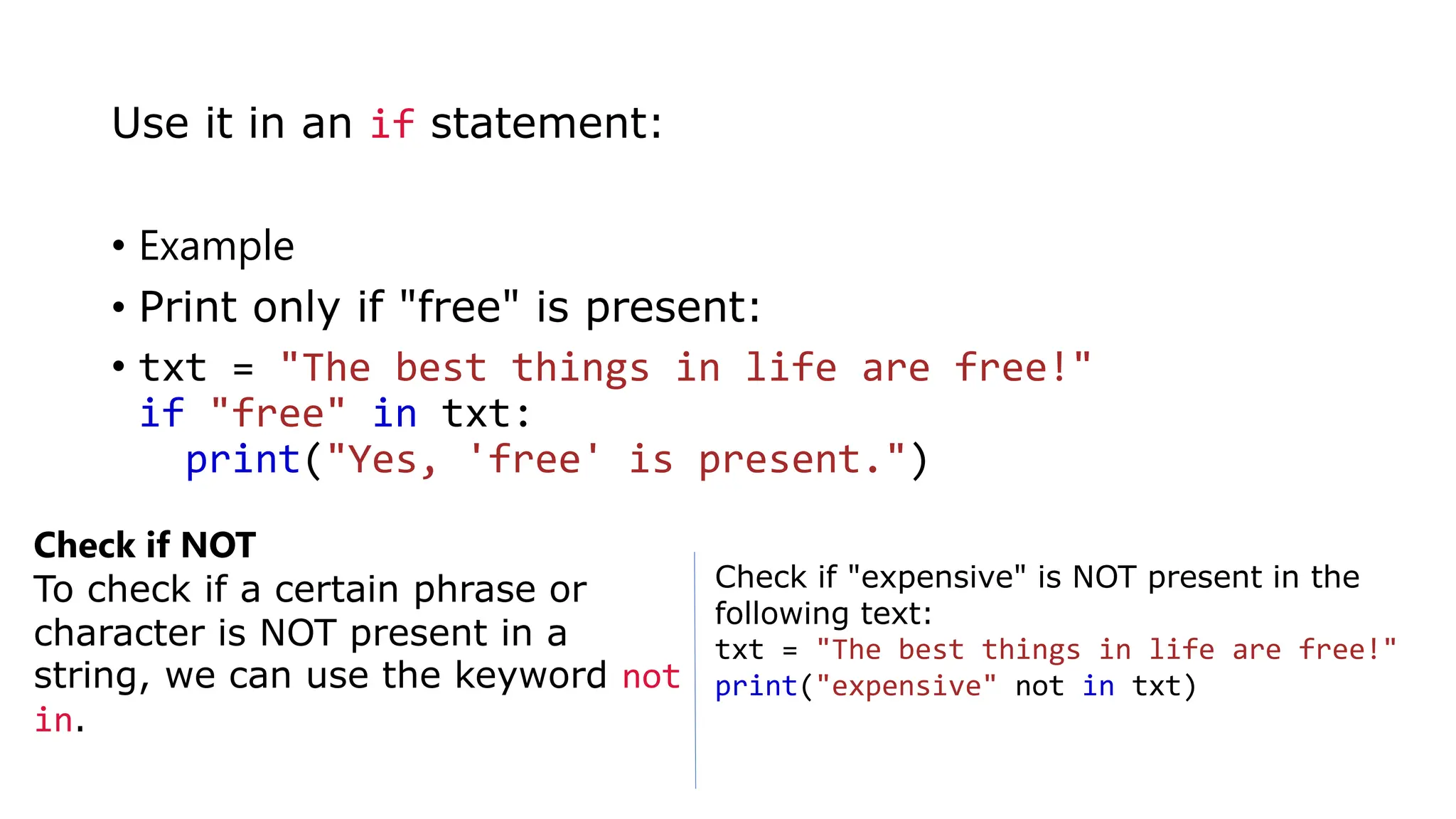
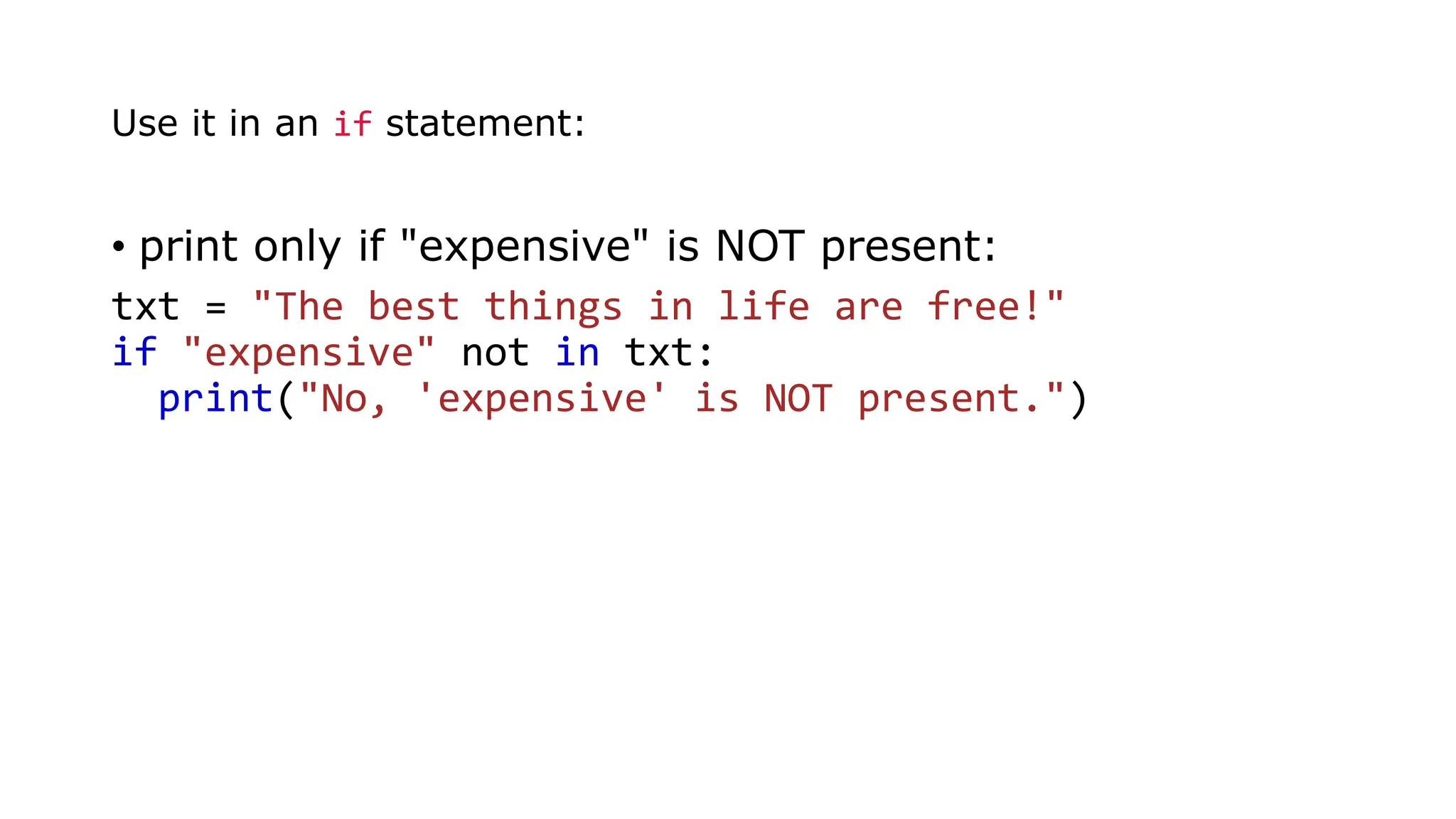
![Python - Slicing Strings
Slicing -
• You can return a range of characters by using the slice
syntax.
• Specify the start index and the end index, separated by a
colon, to return a part of the string.
Example::t your own Python Server
• Get the characters from position 2 to position 5 (not
included):
b = "Hello, World!"
print(b[2:5])](https://image.slidesharecdn.com/pythonstrings-231016105609-4ddc8b97/75/Python-Strings-pptx-8-2048.jpg)
![Slice From the Start
By leaving out the start index, the range will start at the
first character:
Example:-
• Get the characters from the start to position 5 (not
included):
b = "Hello, World!"
print(b[:5])](https://image.slidesharecdn.com/pythonstrings-231016105609-4ddc8b97/75/Python-Strings-pptx-9-2048.jpg)
![Slice To the End
By leaving out the end index, the range will go to the
end:
• Get the characters from position 2, and all the way to
the end:
b = "Hello, World!"
print(b[2:])](https://image.slidesharecdn.com/pythonstrings-231016105609-4ddc8b97/75/Python-Strings-pptx-10-2048.jpg)
![Negative Indexing
• Use negative indexes to start the slice from the end of
the string:
• Example
• Get the characters:
• From: "o" in "World!" (position -5)
• To, but not included: "d" in "World!" (position -2):
• b = "Hello, World!"
print(b[-5:-2])](https://image.slidesharecdn.com/pythonstrings-231016105609-4ddc8b97/75/Python-Strings-pptx-11-2048.jpg)
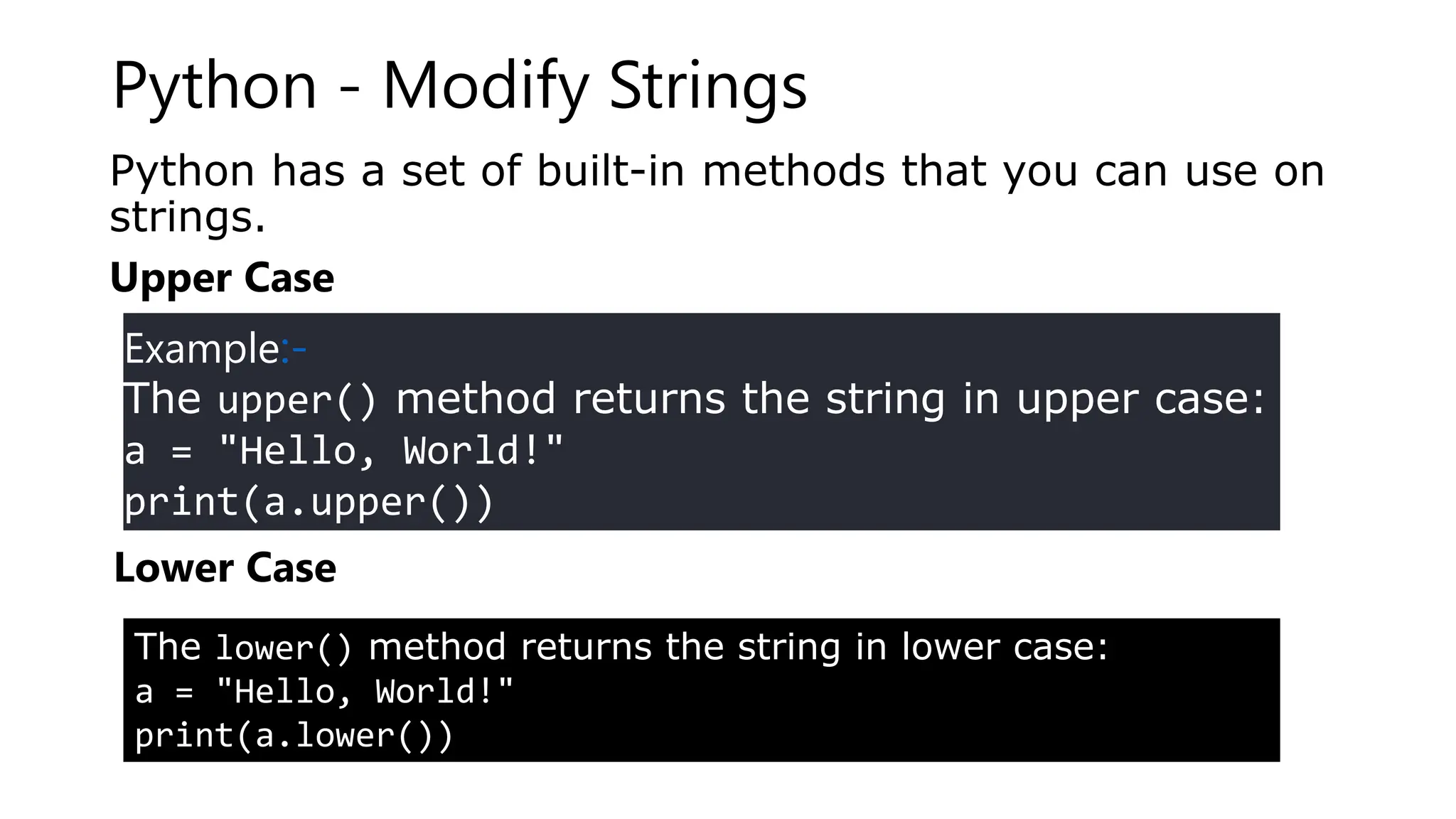
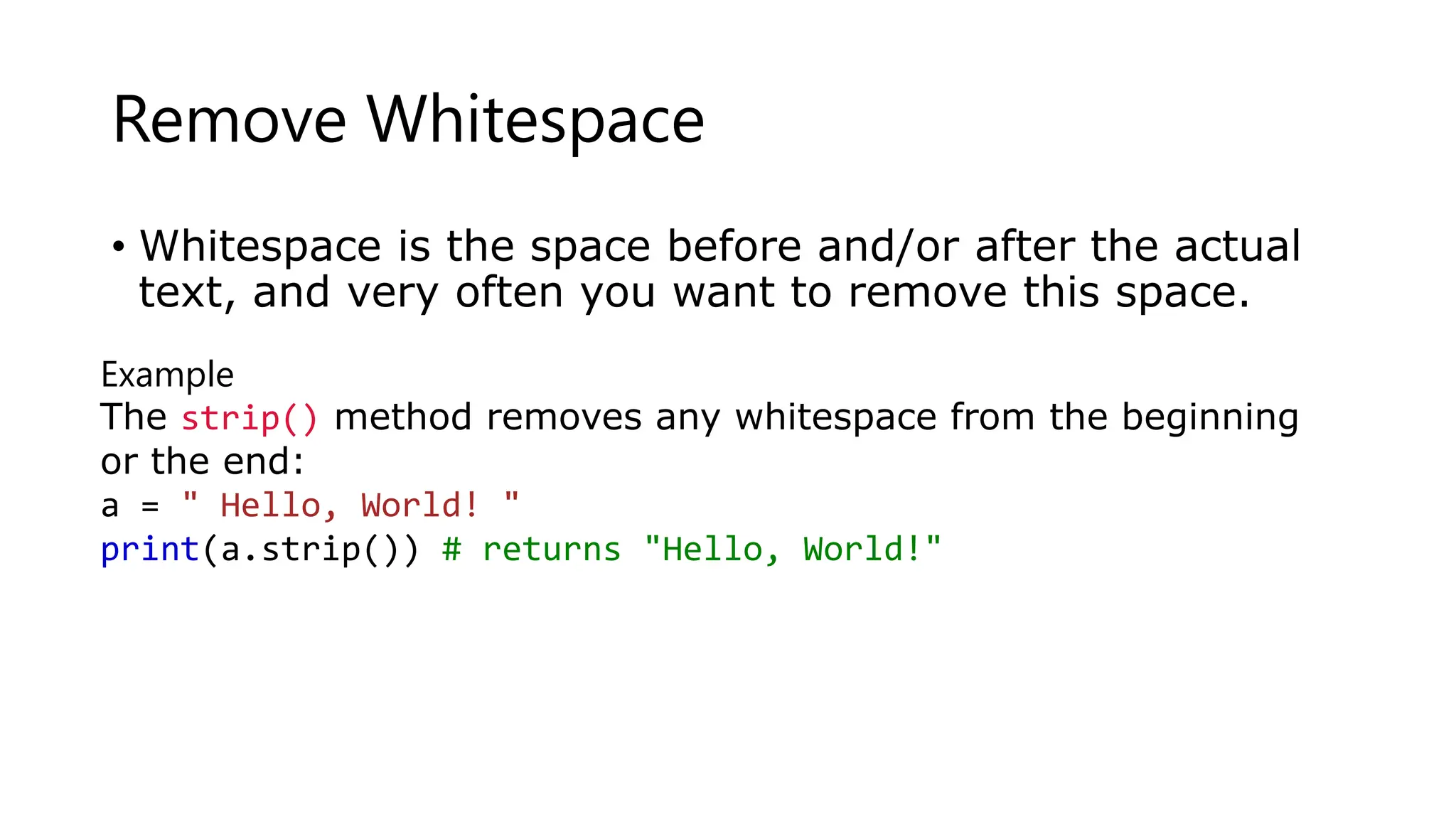
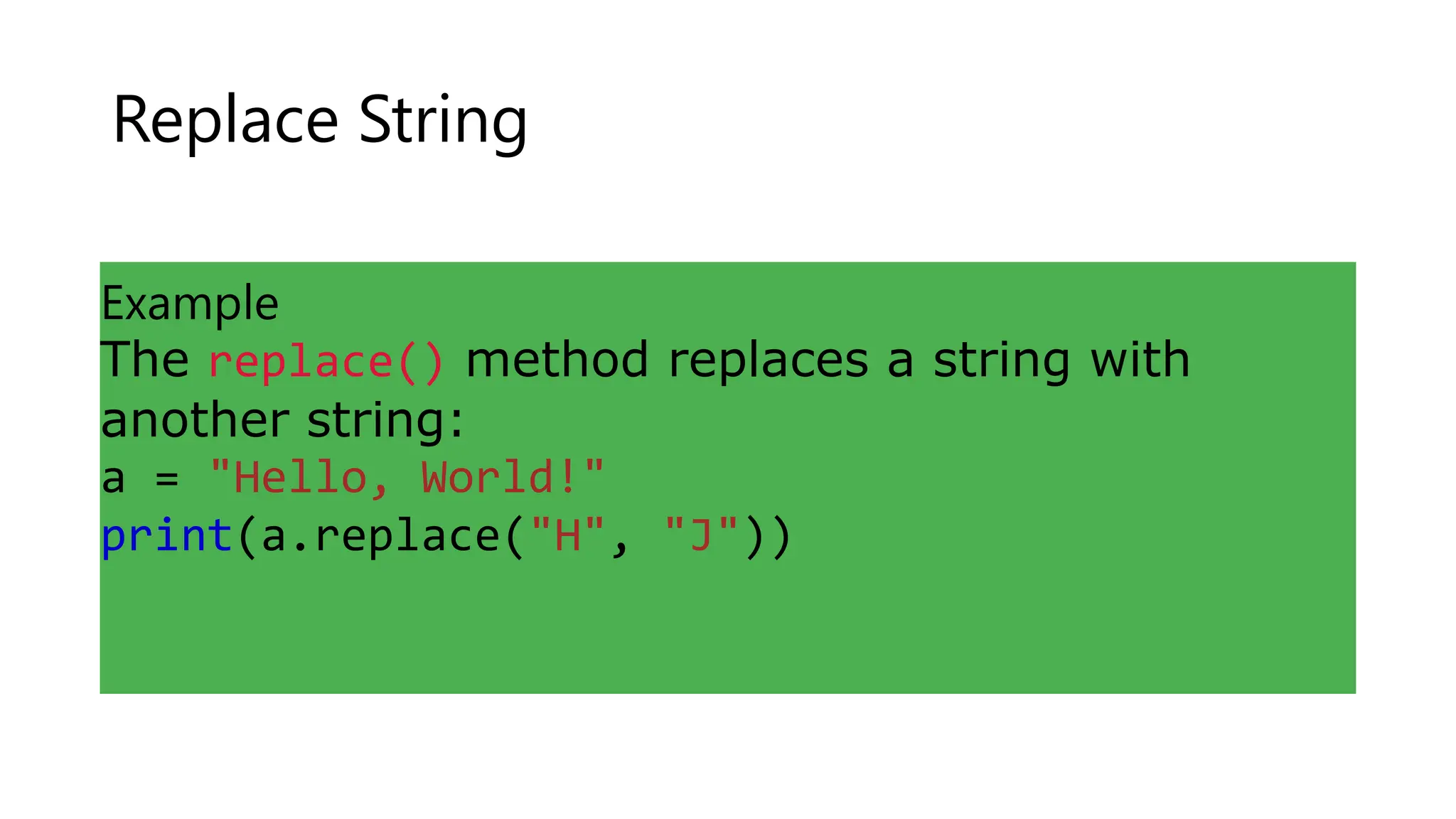
![Split String
The split() method returns a list where the
text between the specified separator becomes
the list items
Example
The split() method splits the string into substrings if it finds
instances of the separator:
a = "Hello, World!"
print(a.split(",")) # returns ['Hello', ' World!']](https://image.slidesharecdn.com/pythonstrings-231016105609-4ddc8b97/75/Python-Strings-pptx-15-2048.jpg)
